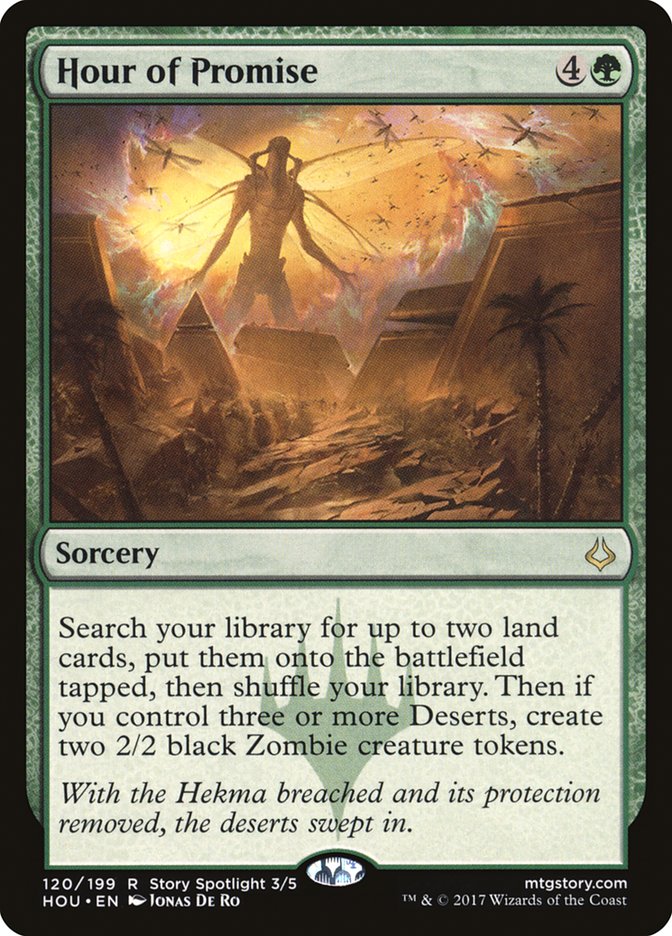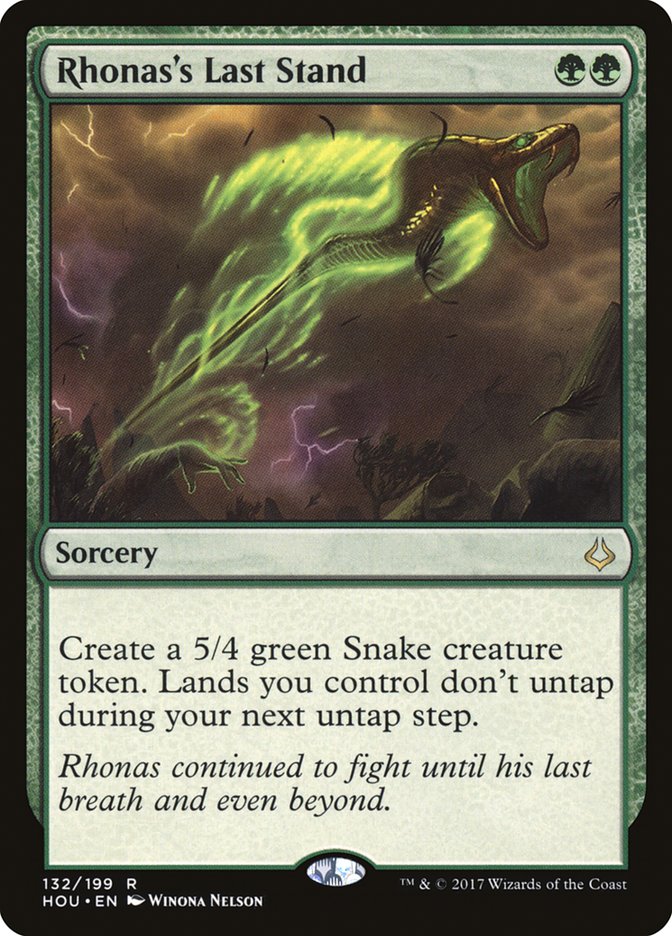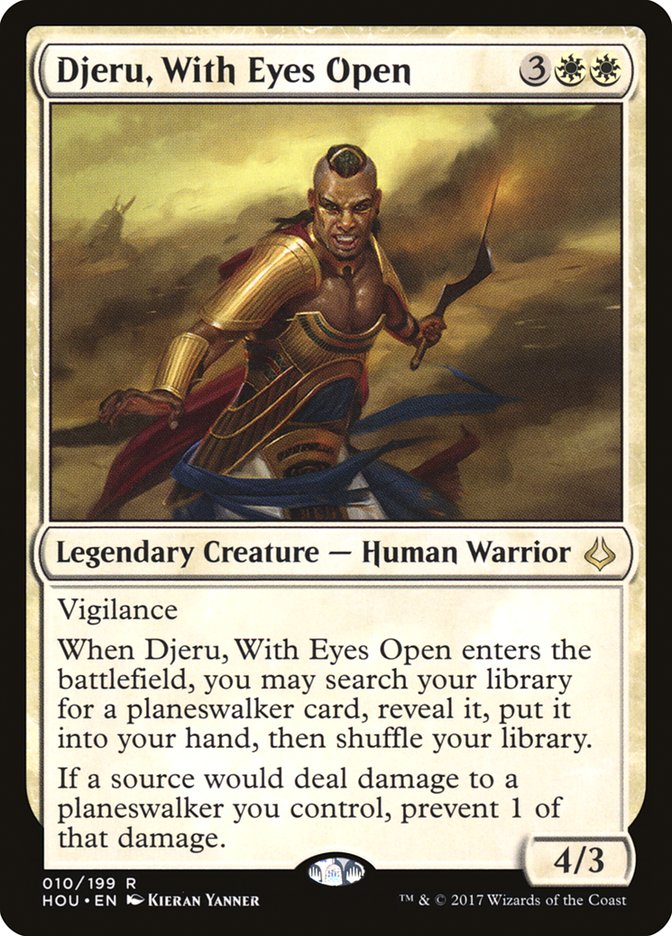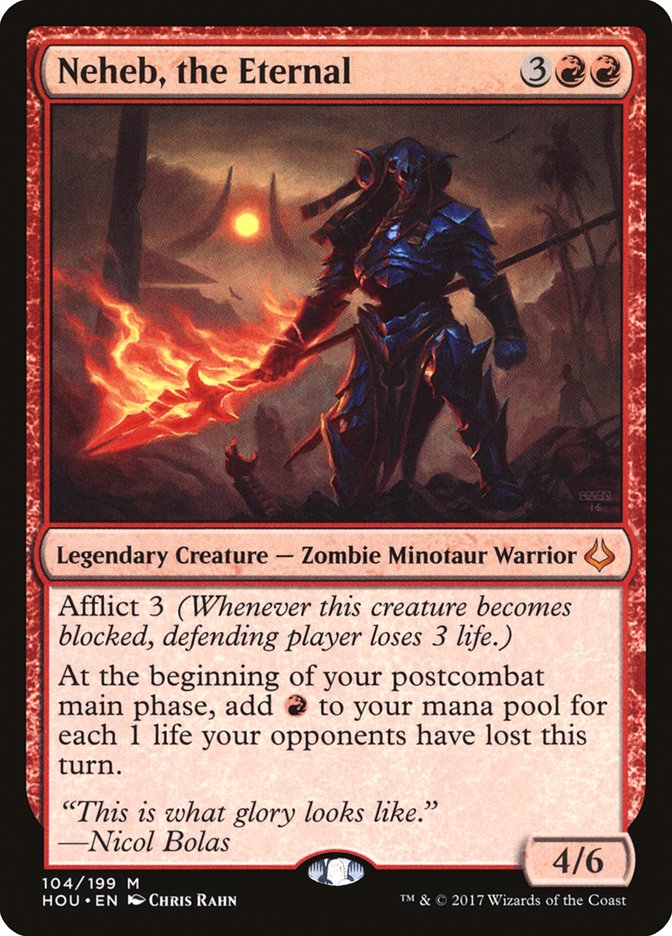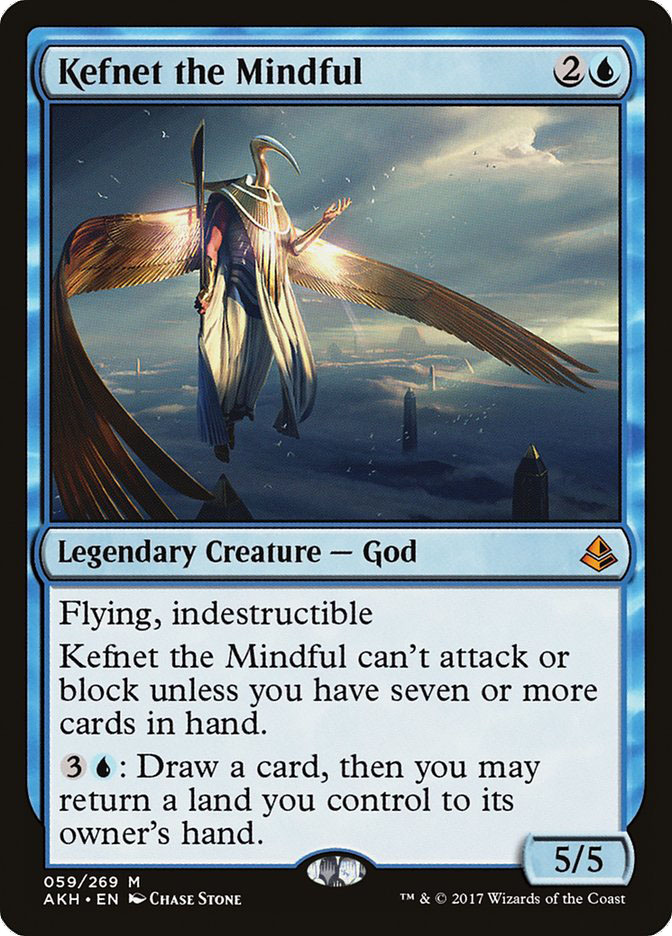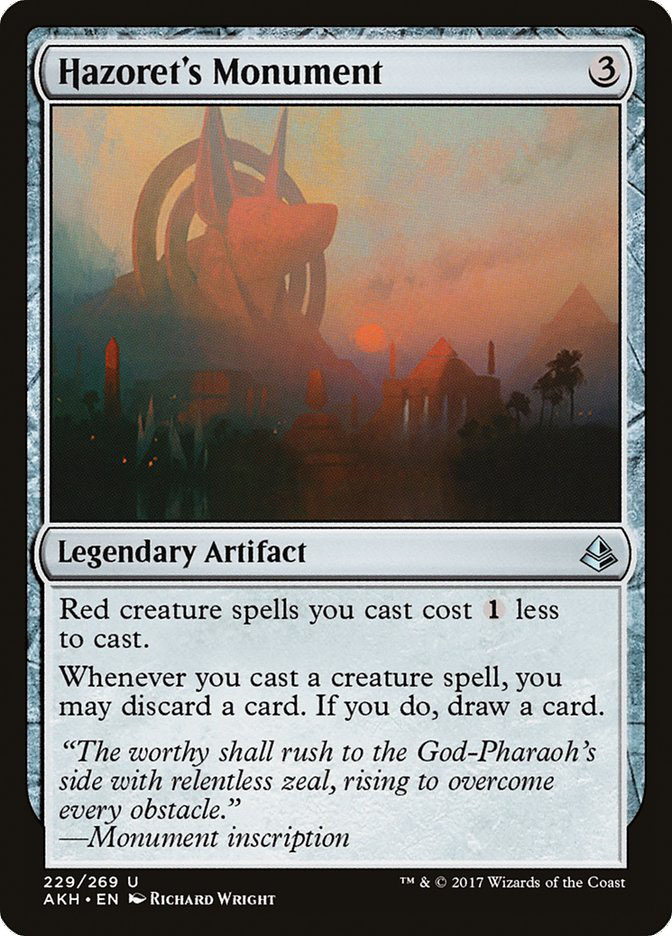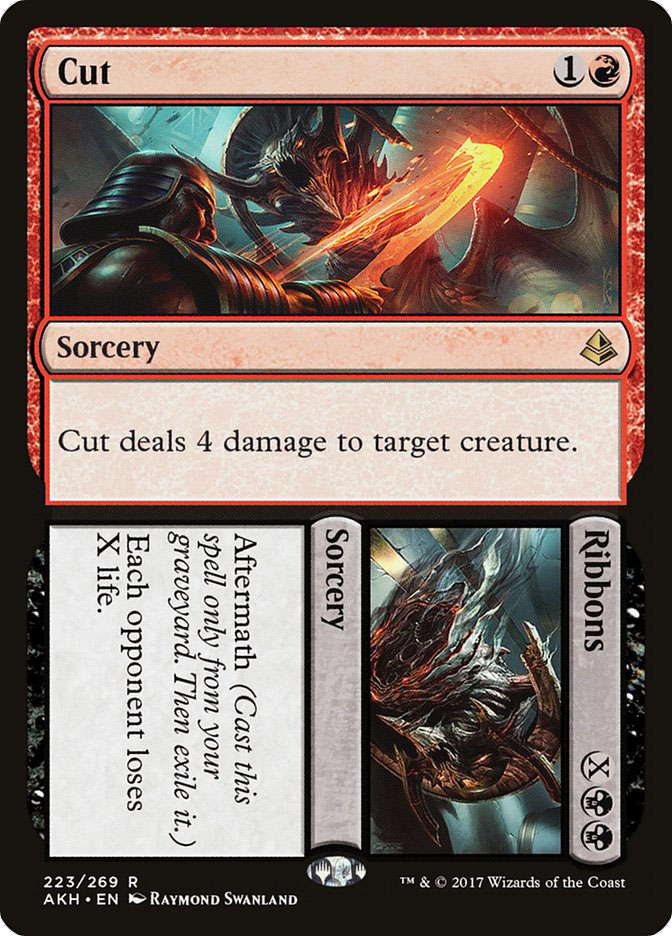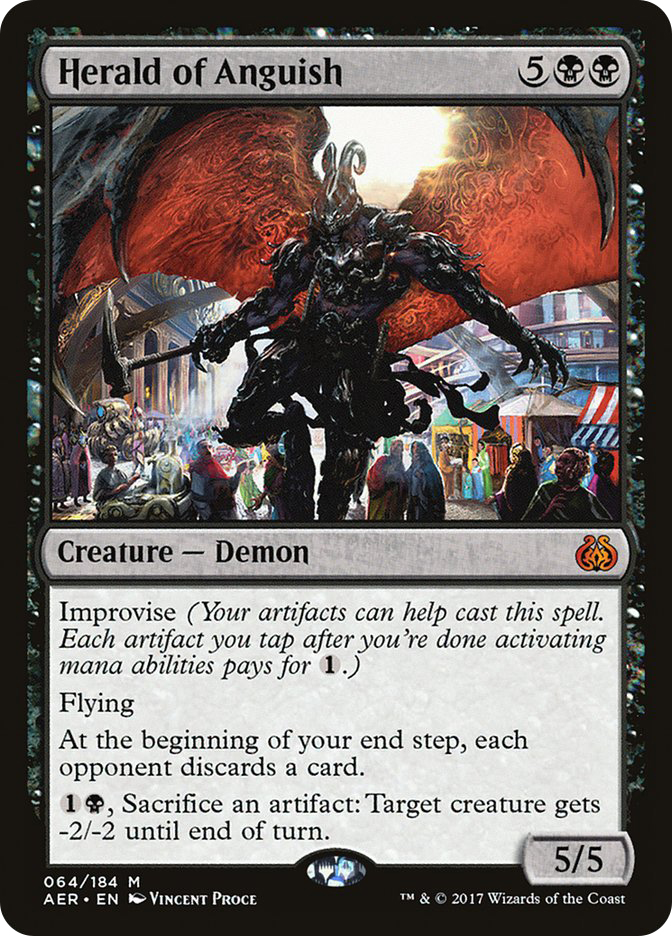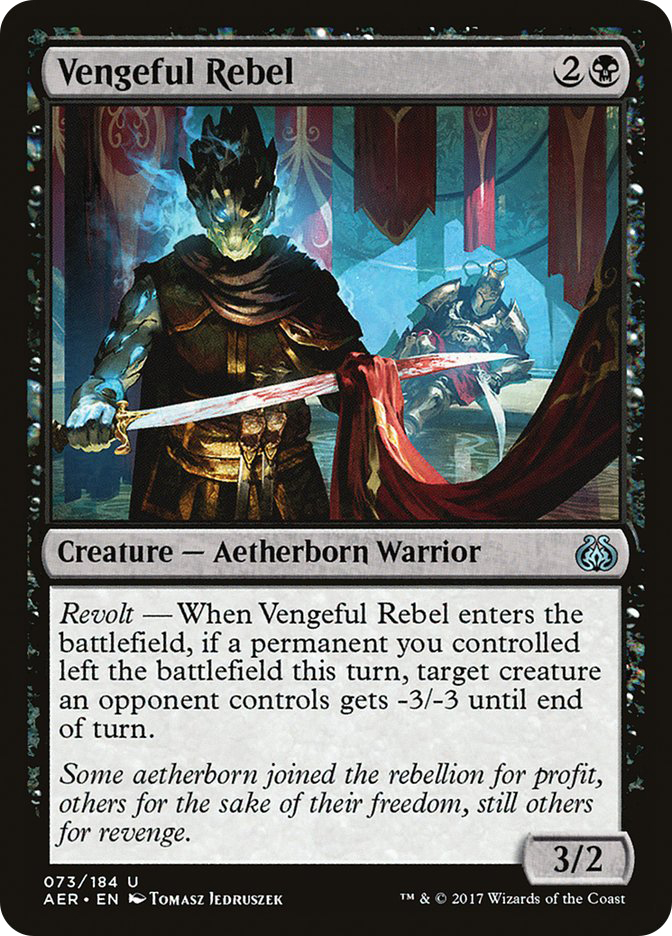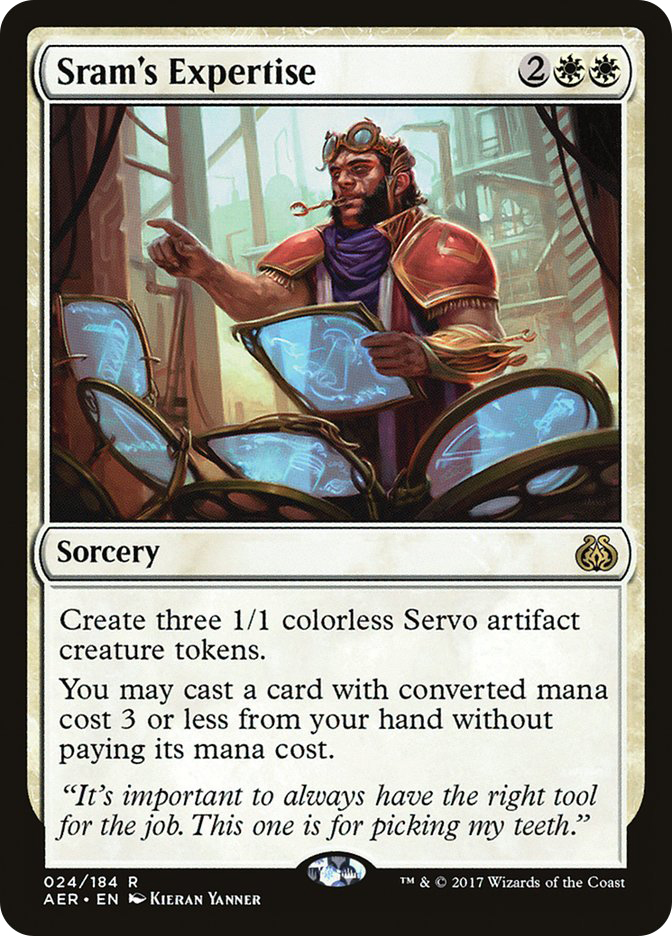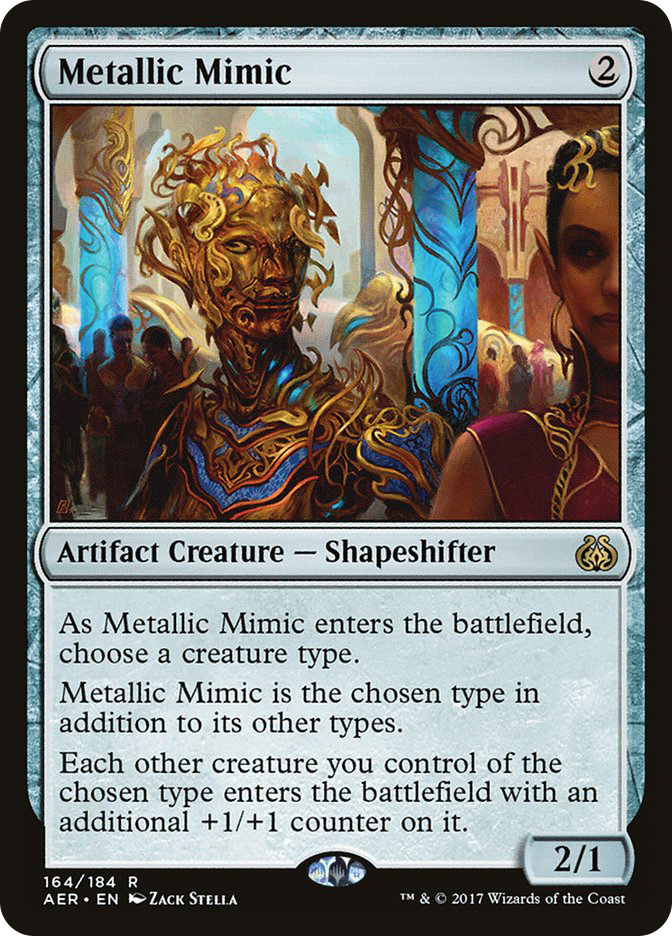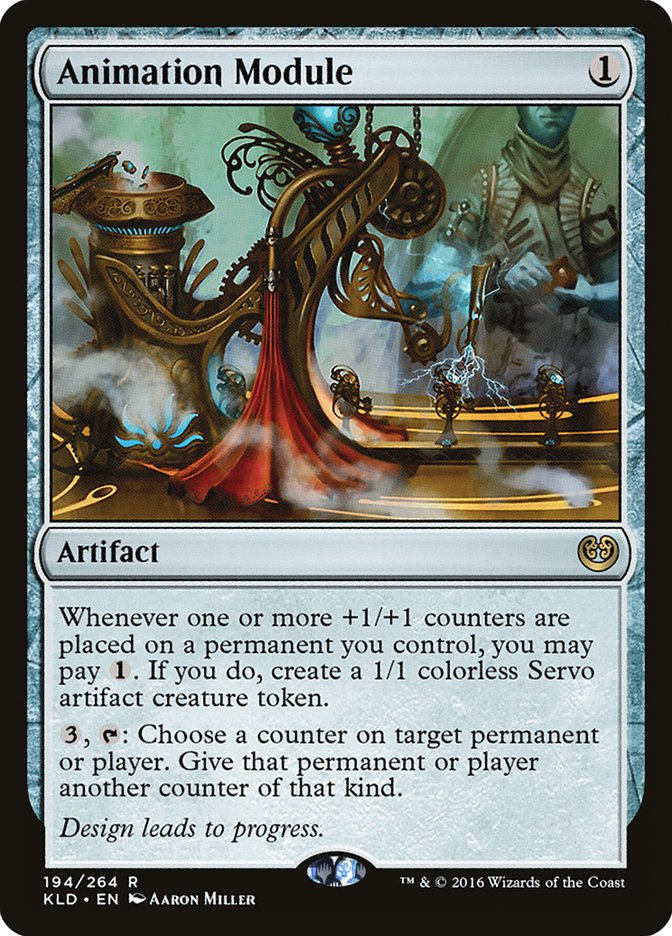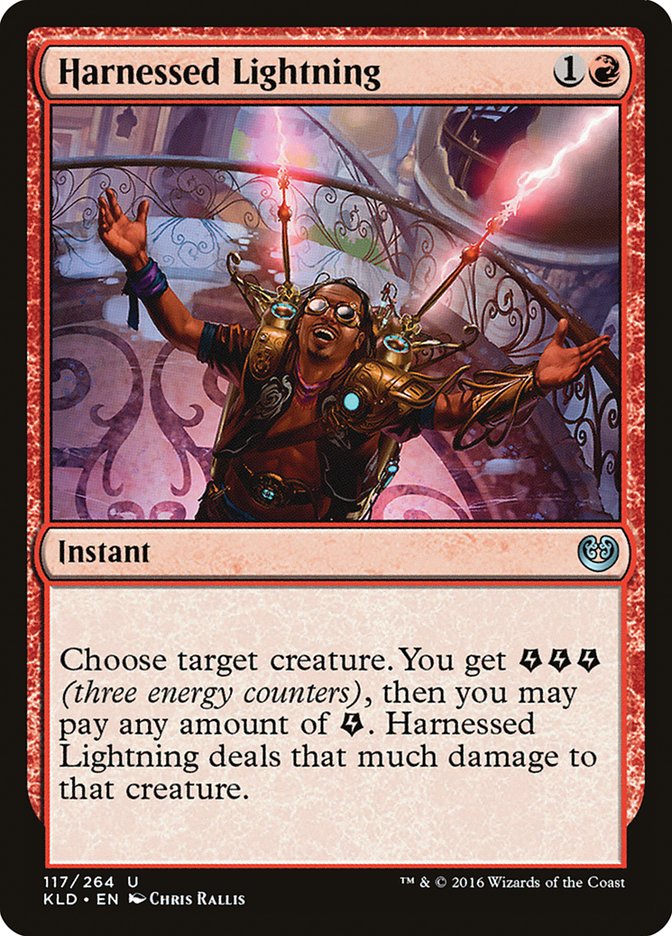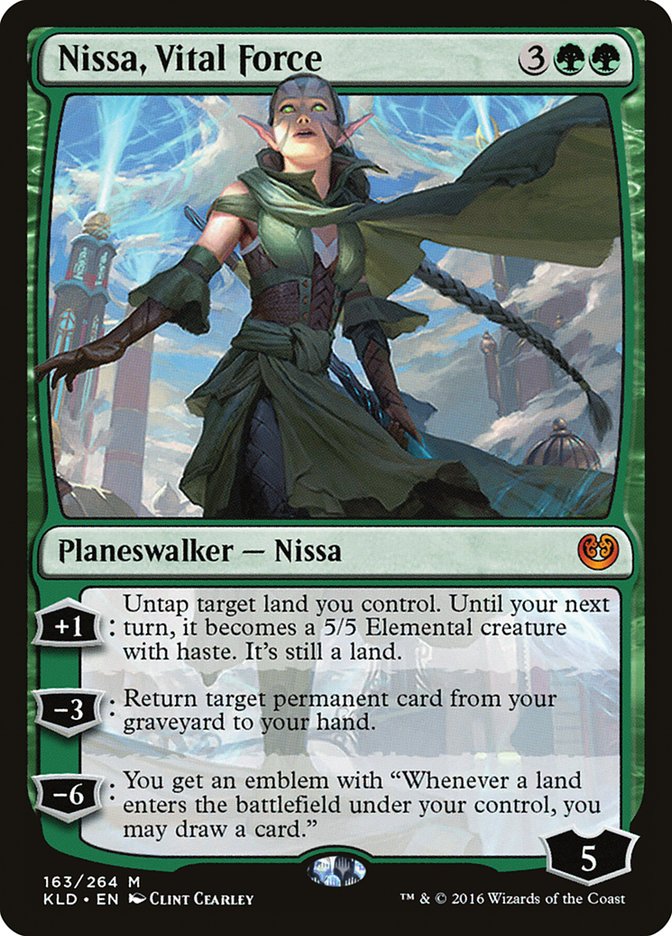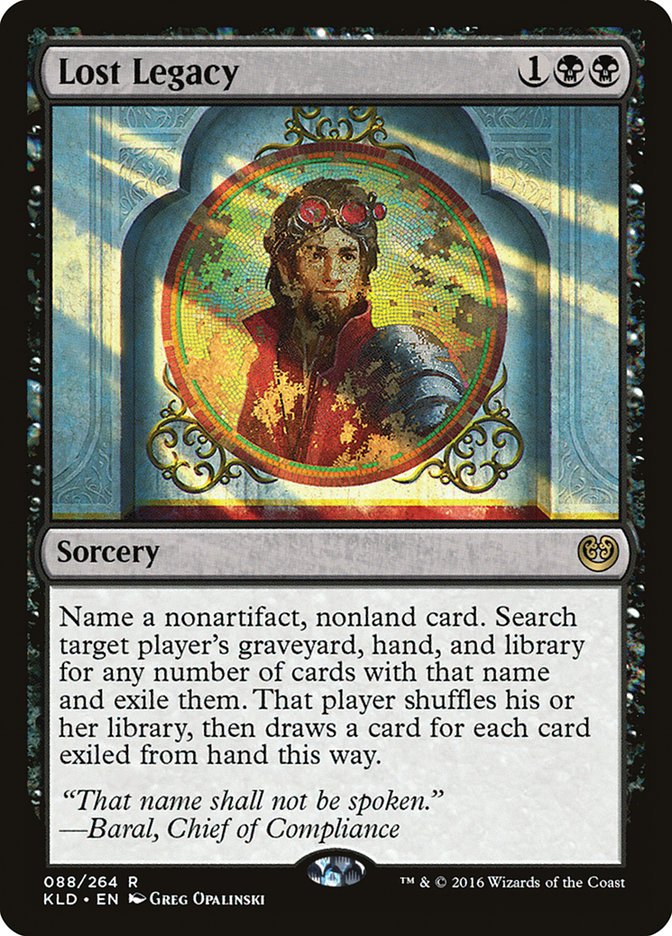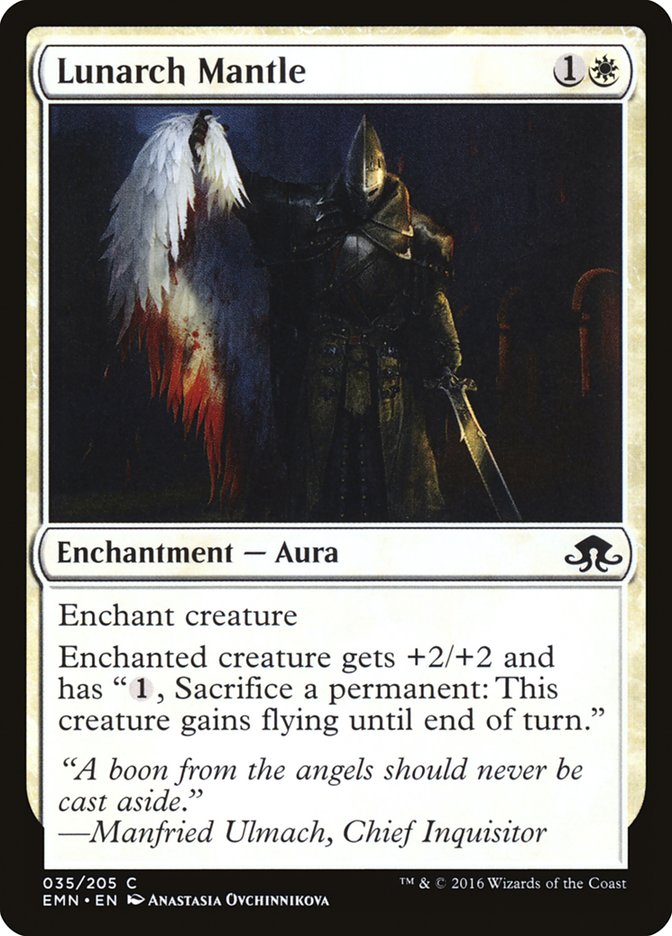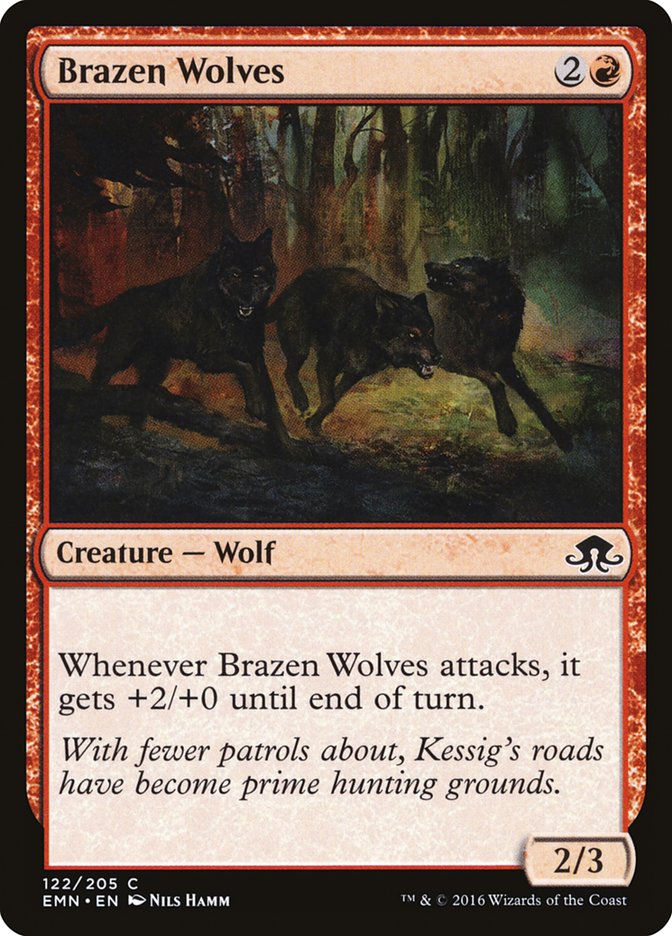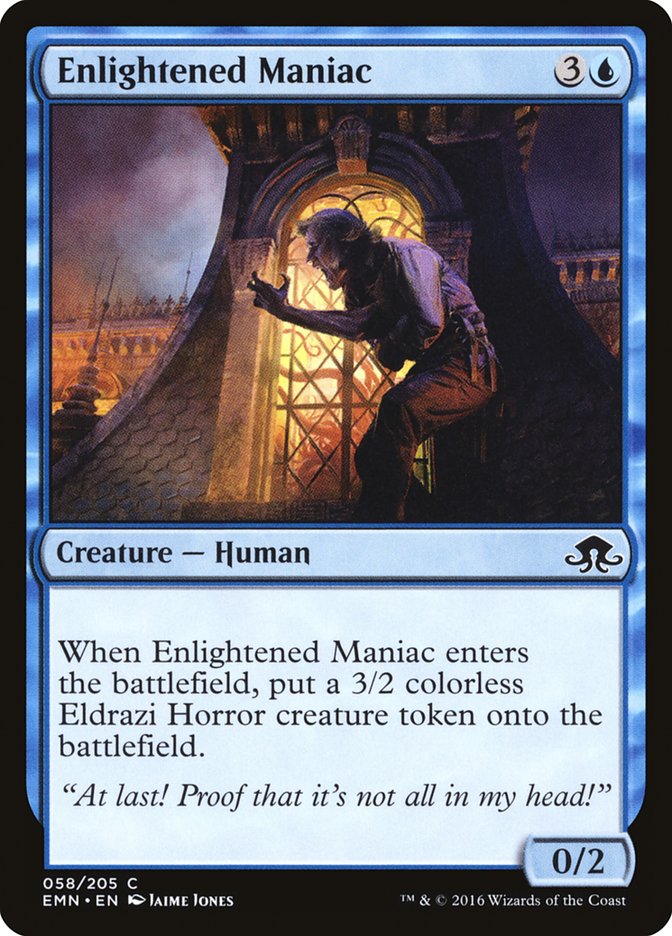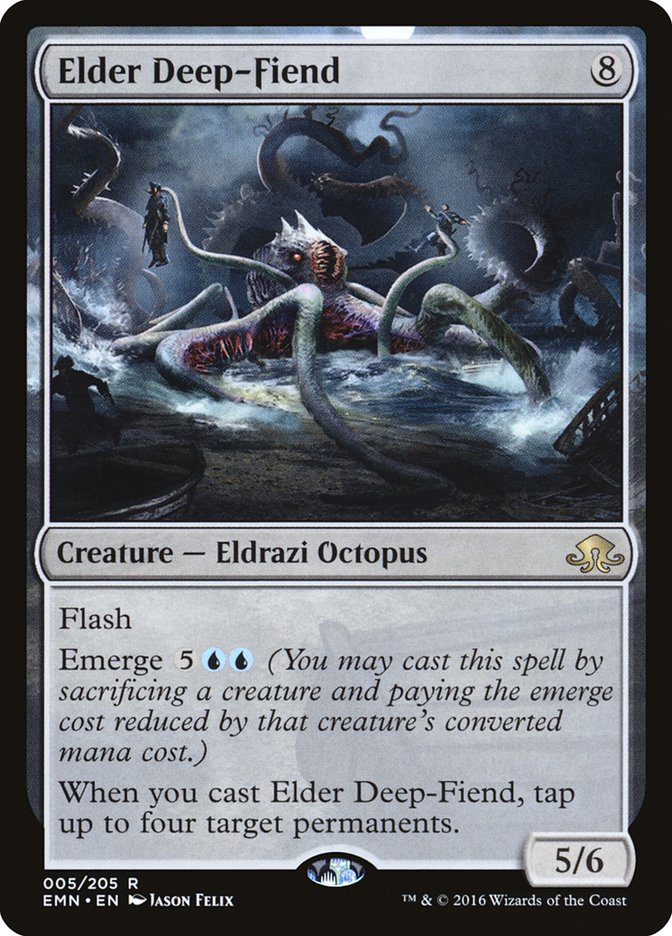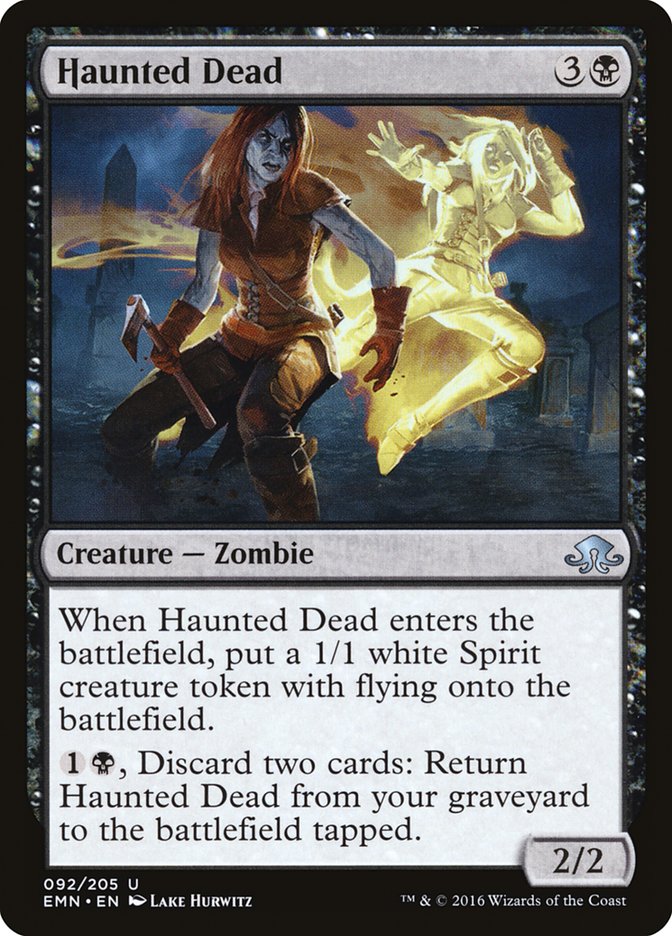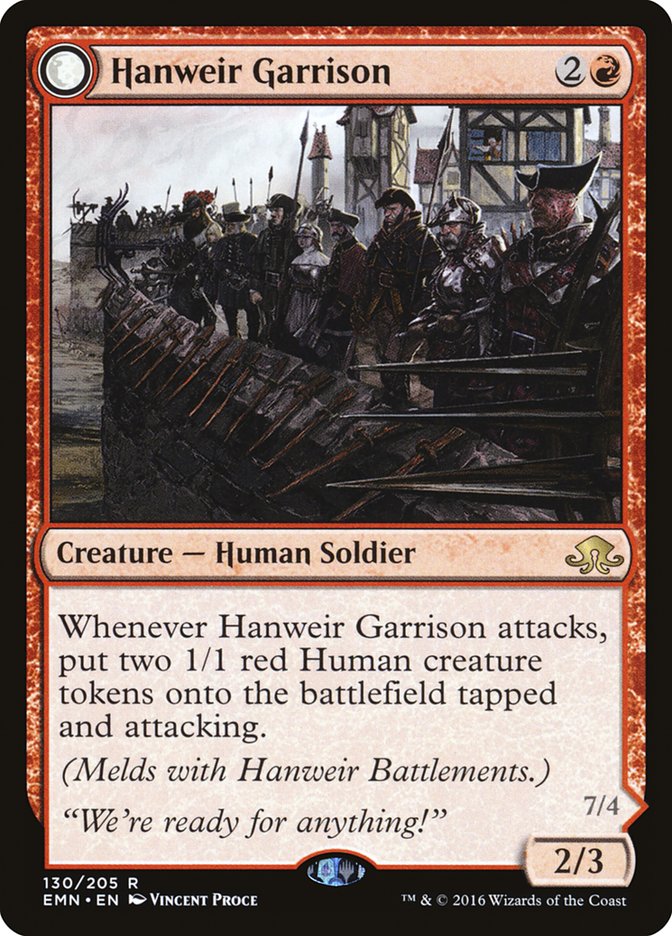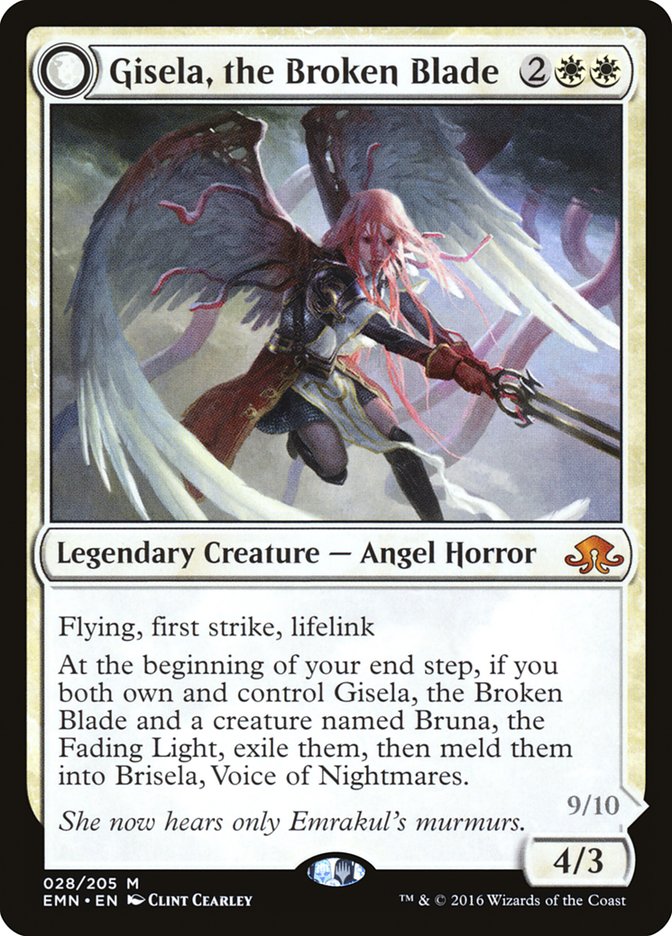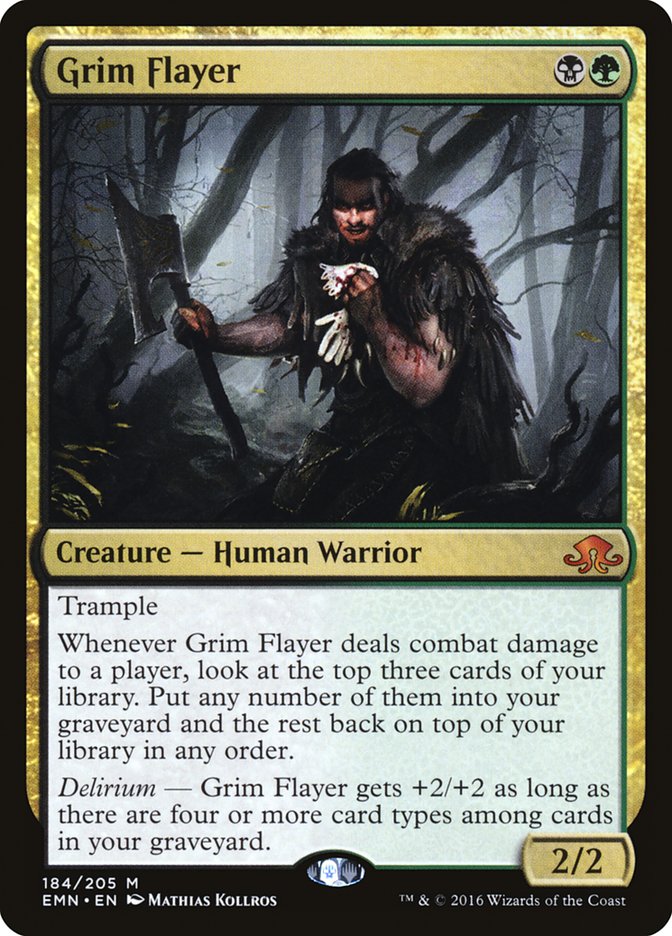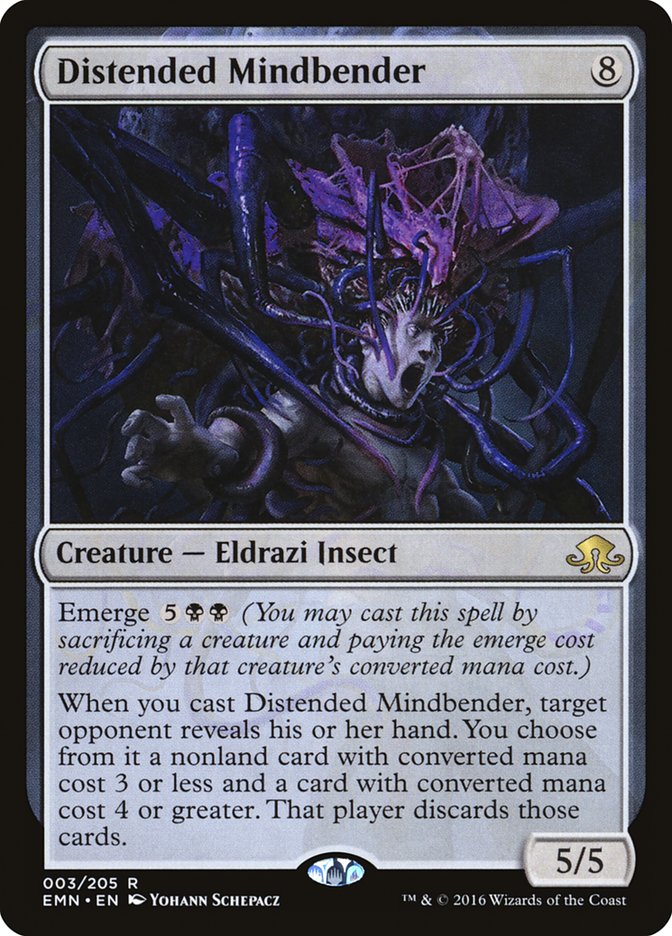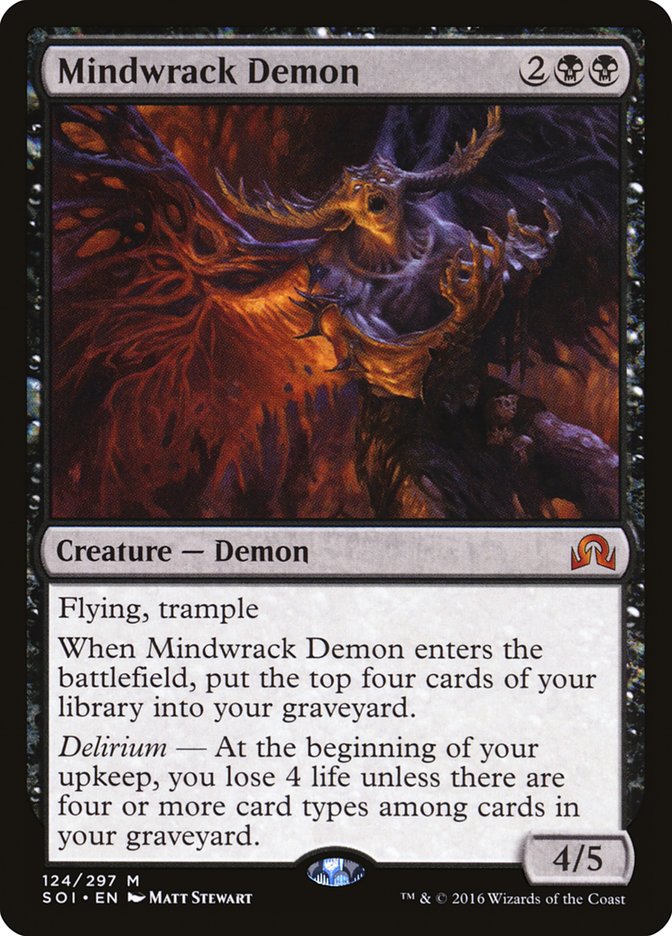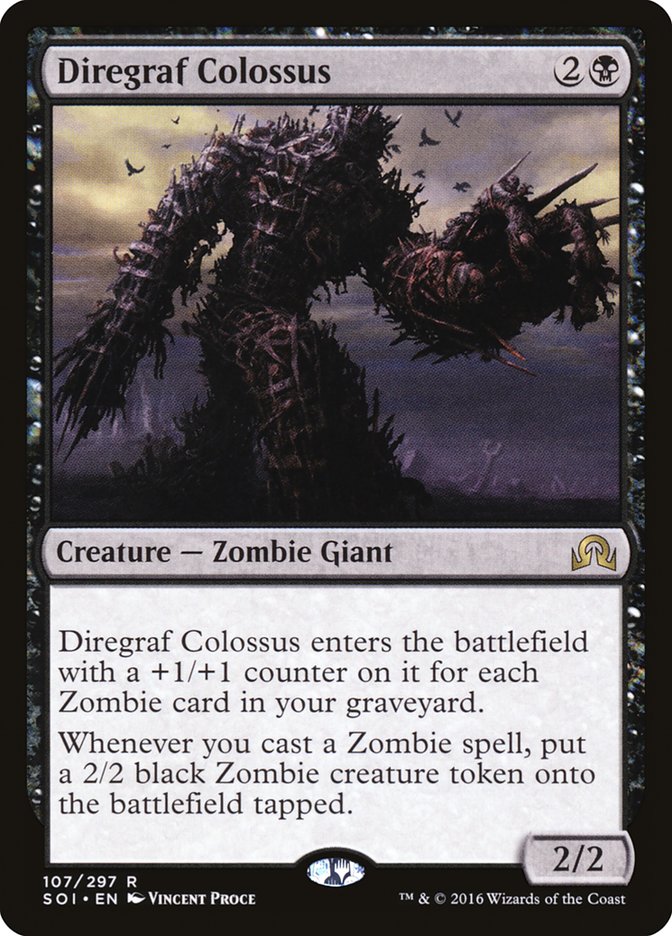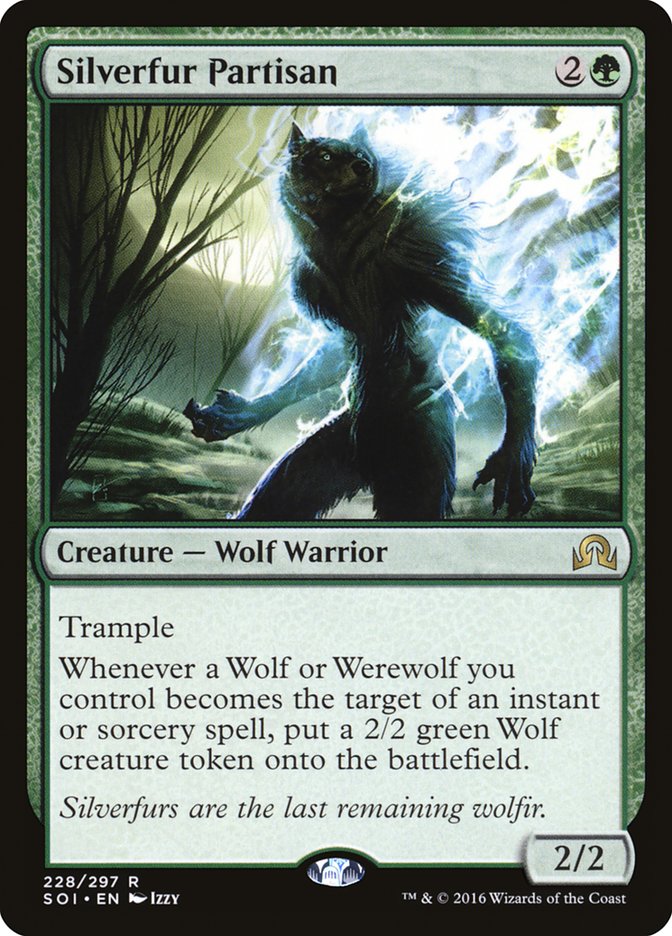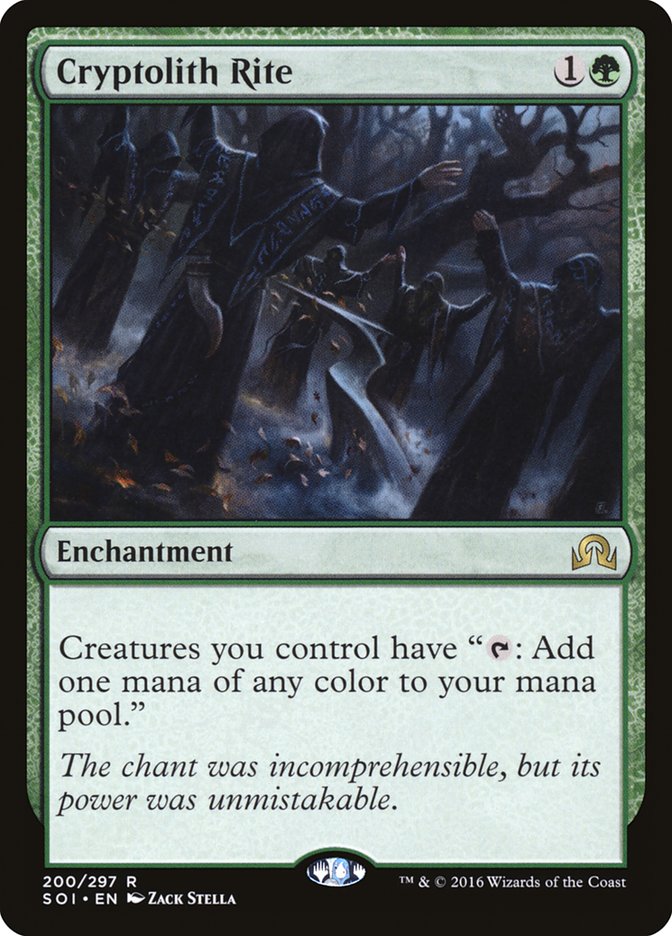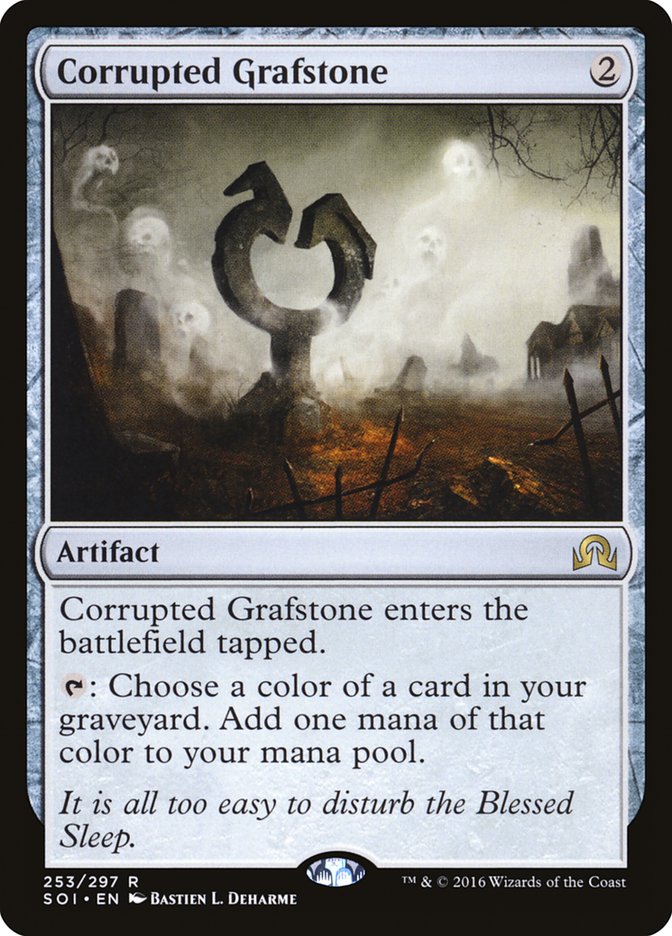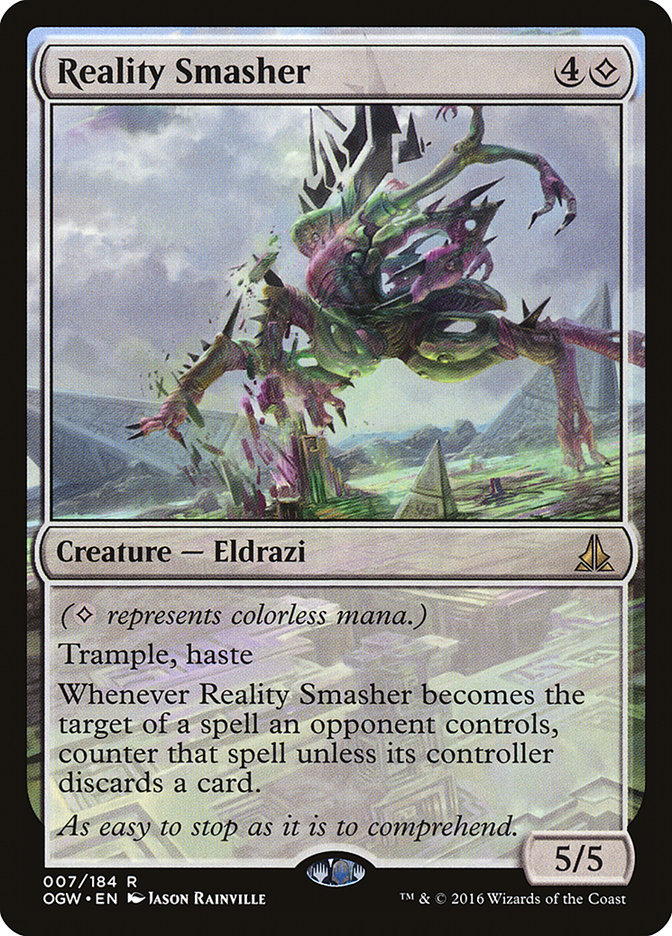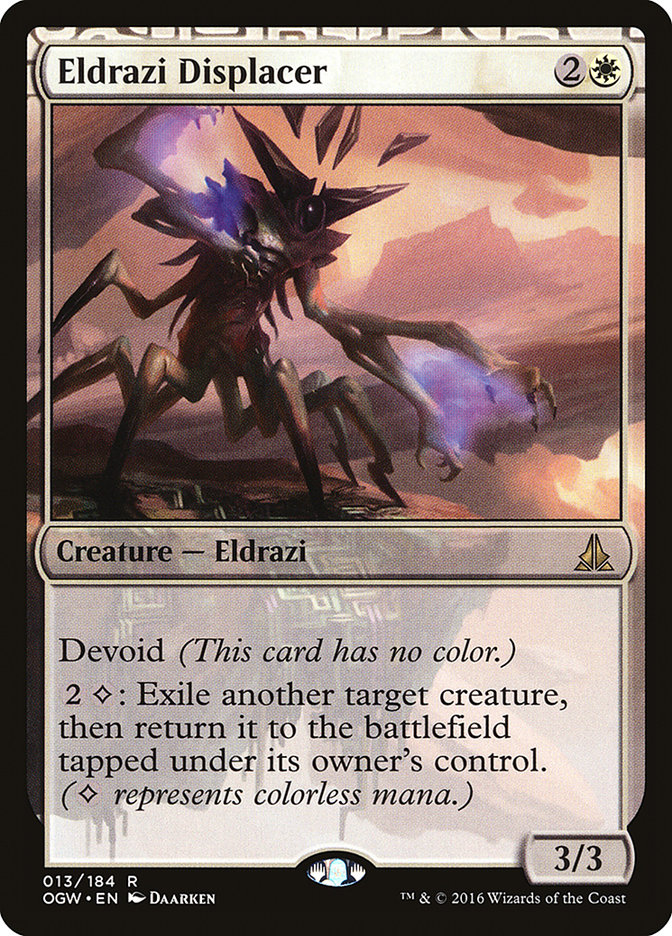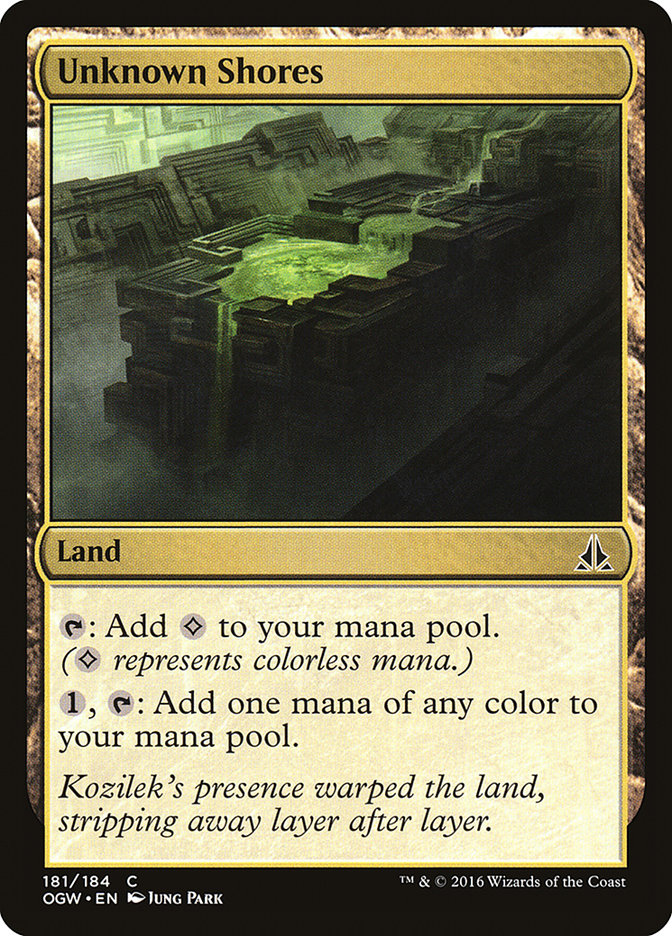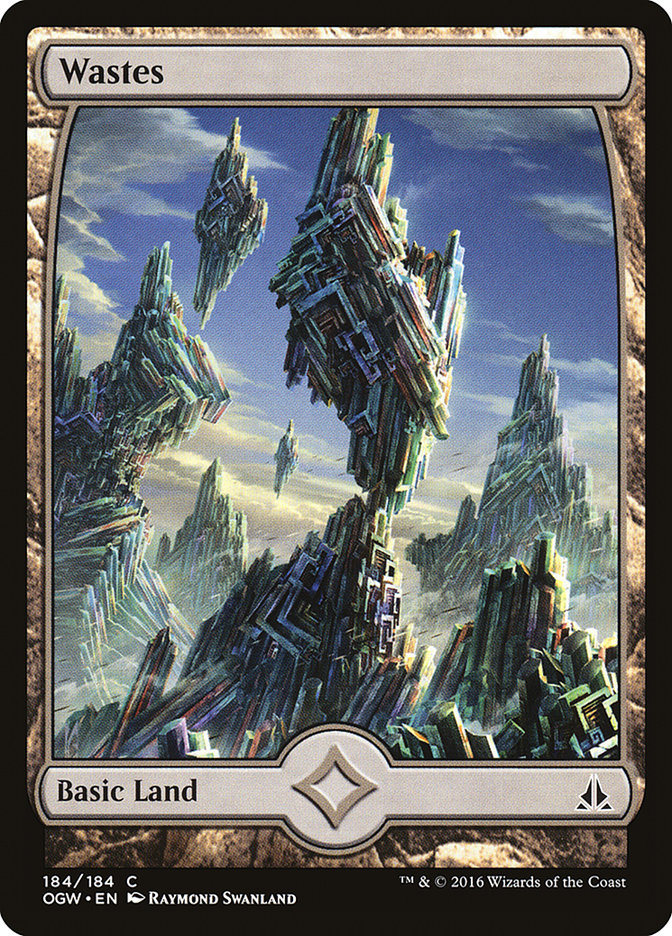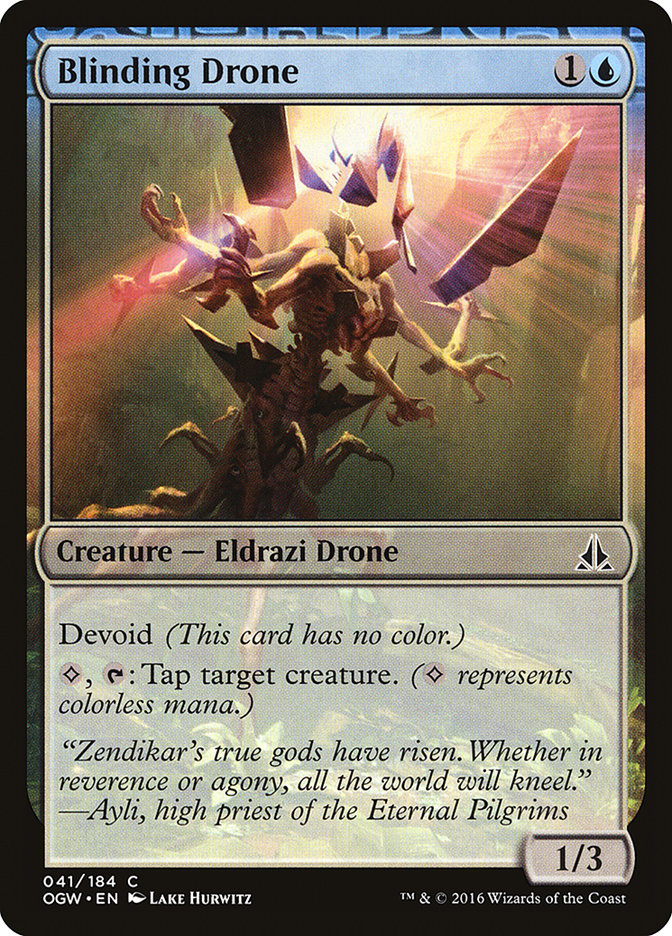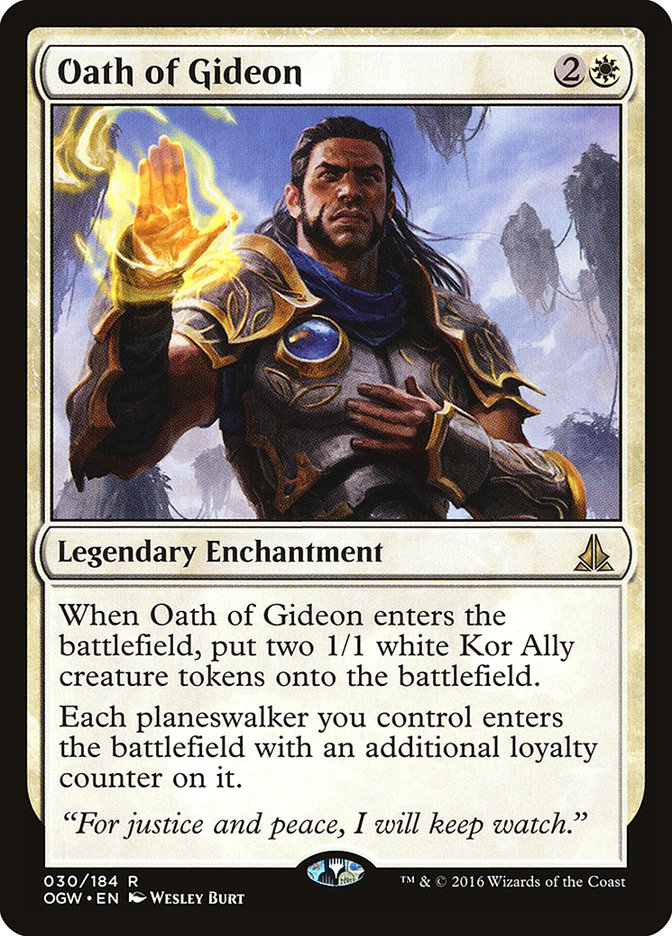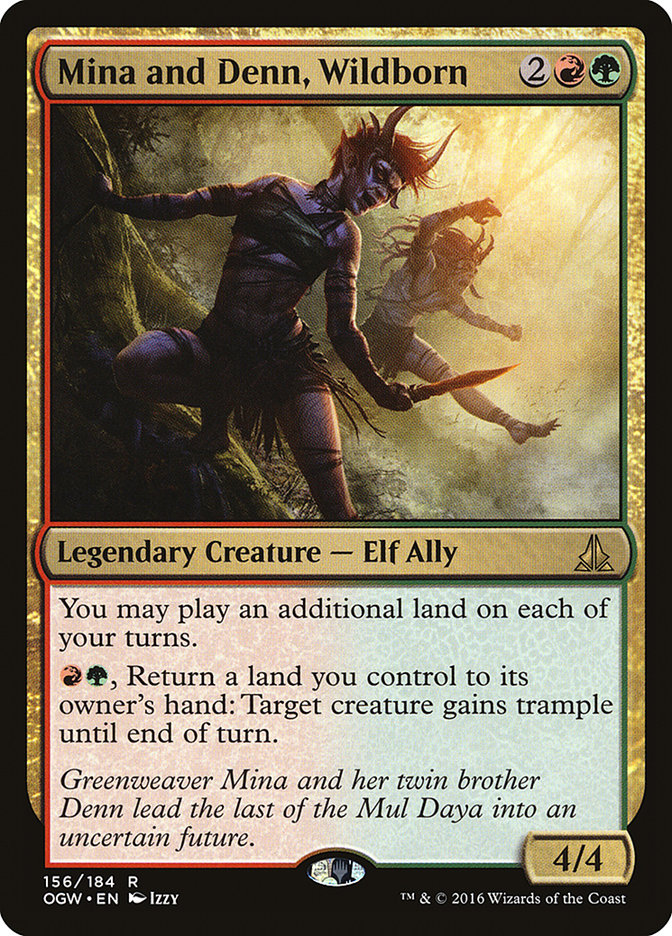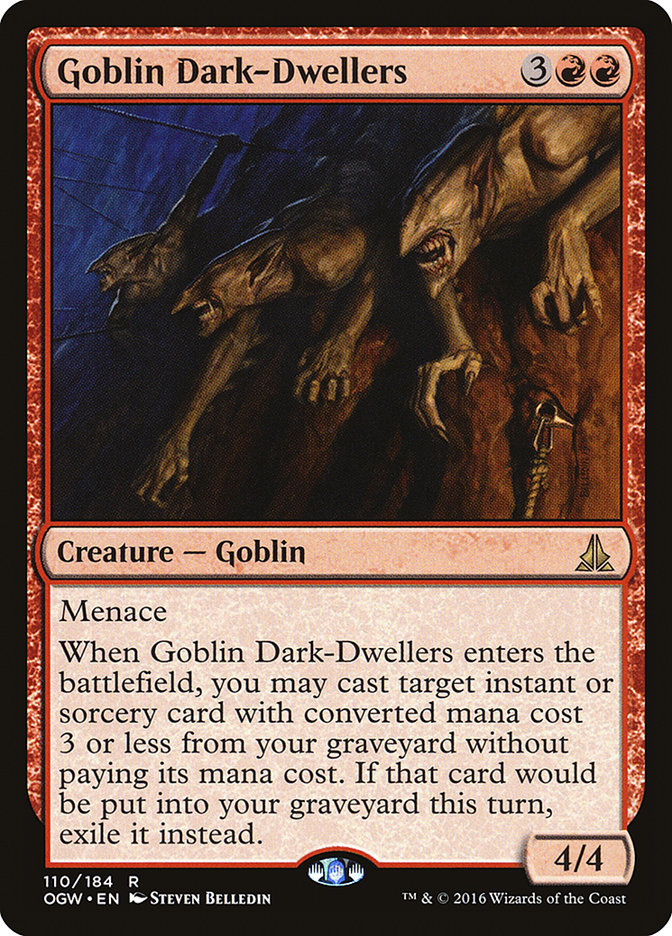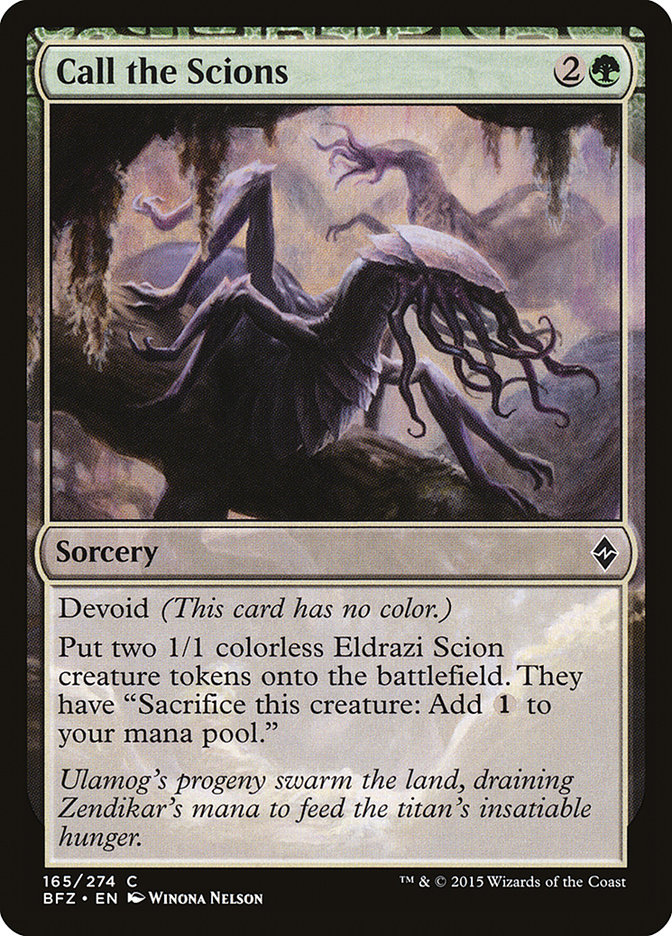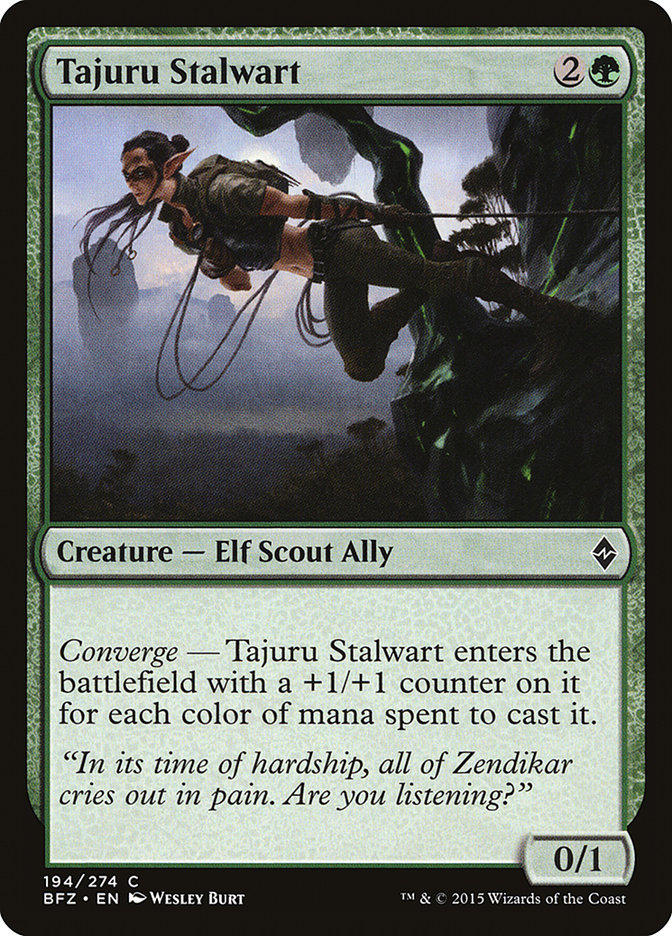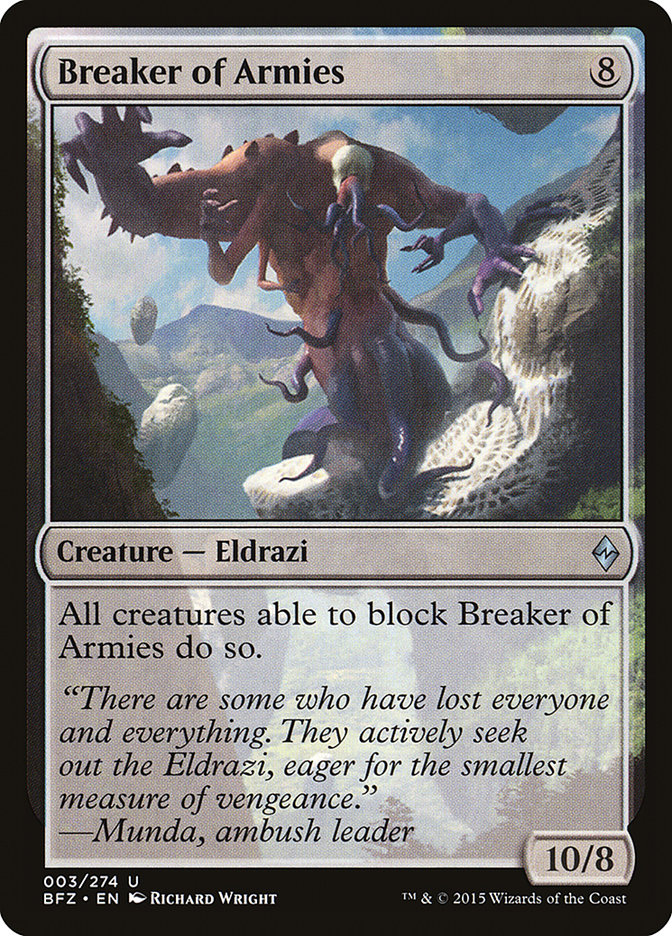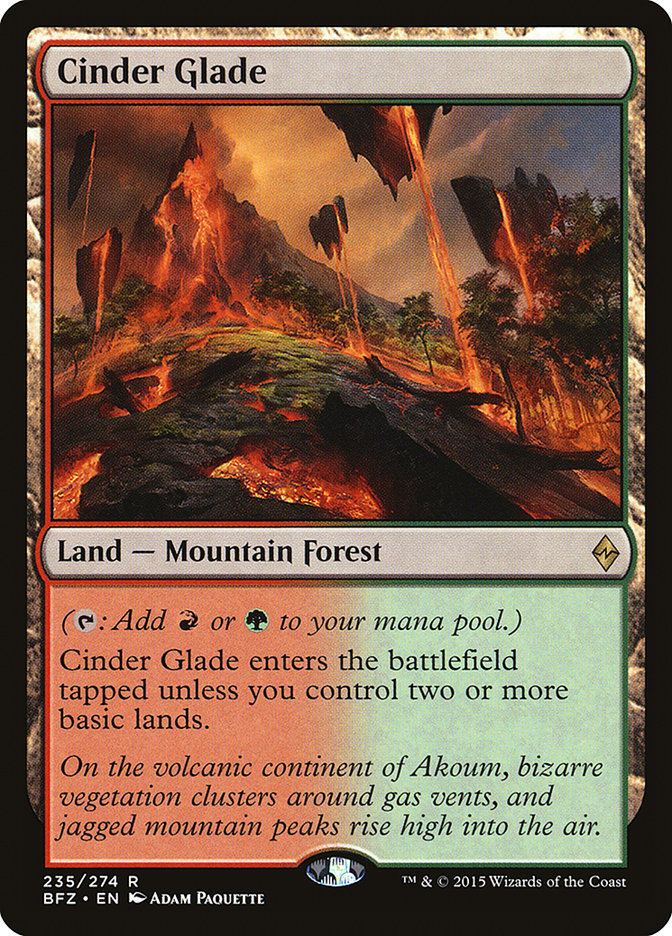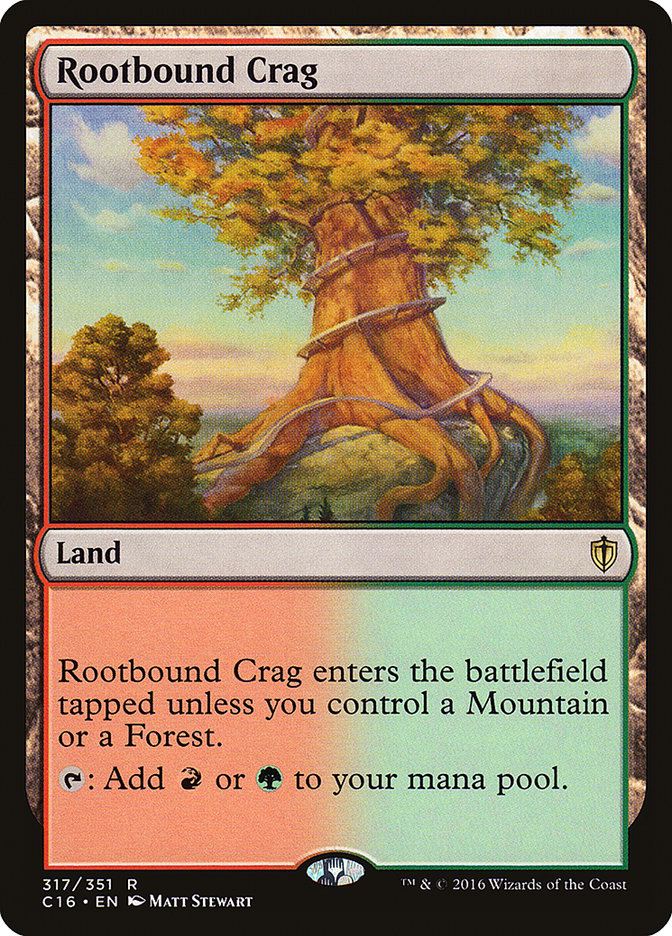With a week until Ixalan previews, it seems appropriate to look back on the sets that currently make up Standard: what cards are people missing for #GPDC in the last days of Standard, what cards will rise as the next format rolls in, and what cards will I miss (or absolutely not miss) as they leave in a month.
Fresh Looks
Hour of Devastation
Let’s start off with a deck you should not be playing next weekend: Ramp. Temur’s Negates are the bane of the Ramp decks aiming to resolve powerful five-mana sorceries. You will just get Time Walked and die before Ulamog is even a concern.
Rhonas’s Last Stand is a super-powerful card that feels like it should have a home in current Standard. As people move away from Fatal Push decks like B/G and Zombies, it seems harder to answer the early 5/4. The issue might actually be the double green mana cost, given the current state of lands, but if you want to get a little aggro with your Longtusk Cub decks this weekend, I would look into this card as a backup early game-ender.
It feels weird to peddle five-drops in a world of Glorybringers, but both Djeru, With Eyes Open and Neheb, the Eternal are cards I have my eye on for future Standard. Djeru finding any high-impact planeswalker like Elspeth, Sun’s Champion or even Ob Nixilis Reignited is a real winner in a lot of potential midrange battles. Consider it a five-mana Rogue Refiner that always can draw one of your best cards. The card just needs that real winner to find.
Neheb, on the other hand, is just uniquely powerful. There isn’t an Ulamog, but the amount of mana it generates is absurd. It survives Hour of Devastation and all of the four-damage removal and can set up double-spell turns if your attack on turn 5 is clear. I don’t know what I’m doing with it, but if there are any reasonable mana sinks, Neheb is the card I’m looking to enable them with.
Amonkhet
There aren’t a ton of special breakout cards waiting from Amonkhet because they’re mostly just solid. The mechanics don’t grow with weird linear interactions; they just exist. The good cards bar Zombies will still be the good cards next year.
The card I’m surprised isn’t seeing more play right now is Kefnet the Mindful. The 5/5 body seems like the perfect way to brick-wall Temur out of potential control decks.
Melissa DeTora mentioned that Wizards of the Coast was testing Hazoret’s Monument in their red decks, and I think we are a card or two away from that being a real-world possibility. I don’t think that card is a five-drop on par with Glorybringer, but more something that makes you want to play another five-drop or two. A two- or three-drop similar to Hardened Berserker from Dragons of Tarkir that doesn’t suck, mana that makes a light bridge to another color easier with a good multicolored three- or four-drop…just something small. Looting a ton is a big deal if the mana matters at all, especially because Hazoret’s Monument is a built-in solution to drawing more legendary copies of itself.
Assuming Ixalan brings a set of good allied-color lands, I expect Cut // Ribbons to be a breakout card of the new format with Jund as a popular trio. A removal spell that closes out the game when you apply any pressure is amazing; we just haven’t lived in a world where sorcery-speed removal is actually good until recently.
Aether Revolt
I don’t have a lot to say about Aether Revolt, but that’s largely because the set was uneventful bar one little accident. Improvise was a crucial mechanic of the set, and it’s just so hedged, it isn’t interesting. If it isn’t worth spending more than a card to ramp out good five-drops with Servant of the Conduit, why would I invest in more bad artifacts for a seven-drop that isn’t even much better than Glorybringer?
If Sand Stranger can see play, Vengeful Rebel is one good fetchland away from being a key Standard player. But beyond that, I’m not actually sure there’s a good reason to be revolting. Again, the mechanic was so easy to abuse if pushed that it was scaled back out of Constructed range, which, given the rest of Kaladesh block being off the rails, is bizarre.
Just remembersome weird broken stuff still exists. If Sram’s Expertise or Animation Module randomly lines up with the right stuff in a new set, a really wild deck can exist. I don’t know what the card is, but since most sets tend towards +1/+1 counters instead of -1/-1 counters and we are entering a soft tribal block for Metallic Mimic, there’s a chance Ixalan is the turning point.
Kaladesh
A key thing to look for as more non-Energy sets roll into Standard is when having Harnessed Lightning over a less constricting answer is best. Having a two-mana answer that punches up and kills x/5s and Vehicles at instant speed is looking to be fairly unique with Walk the Plank as a sorcery, but you are basically priced into playing Attune with Aether or Glimmer of Genius to support it. Sometimes it will be right to play those cards, and sometimes it will be better to do something else, similar to how Traverse the Ulvenwald is sometimes the better option today.
I have my eye on Nissa, Vital Force as a potential breakout hit for the next Standard format. While she isn’t the best at protecting herself, the runaway potential her emblem represents when unopposed is hard to match. While “unopposed” is a difficult thing to promise, the ability to late-game chain up answer-threats with her -3 like Glorybringer means having Nissa, Vital Force in your deck gives you unique inevitability. It’s not quite the power level of a true ten-drop to make that play, but there’ll be no Ulamog, the Ceaseless Hunger around for competition.
Oh, yeah, this is also in the format.
And this one, despite the madness-discard engines largely disappearing.
And this one for when Harnessed Lightning overtakes Abrade.
Basically, my point is to read the Kaladesh card list again a few times once you start going on Ixalan Standard. This set is messed up on a lot of angles, a common trend among sets that get truly broken at the top-end.
Goodbyes
Eldritch Moon
I’m fairly sure Eldritch Moon is one of the closest things Magic has ever produced to a perfect set.
Eldritch Moon Limited had so many perfect but subtle design and development aspects. I’ll save the lecture: I have no idea if they were fully intentional, but this set should be studied and replicated on a micro-level in a way few sets should be.
The mechanics were exciting in broken, flashy ways without actually quite breaking the game. You saw a card, you said “No way is this a thing,” but got rewarded for trying, yet the format didn’t fall apart because of it. Again, I have no idea if this was intentional or not.
I can even forgive Emrakul, the Promised End getting boring. Half of the issue was how well all the cantrips in the format aligned with the card, and if it had been just a top-end to specific archetypes, it would have been far less offensive. Think of how annoying Ugin, the Spirit Dragon would have been if you saw it literally every game and it had no “eight-drop on turn 2” liability. Honestly, if the cost reduction had been a simple minus-five for delirium and Aetherworks Marvel had rightfully taken the first hit, I expect Emrakul, the Aeons Torn would have been a healthy part of the format through current Standard.
The only thing that makes me sad about the set is that meld didn’t see more play. The cards that existed were perfectly fine on power level and I understand why there weren’t more for printing logistics reasons, but holy crap they were awesome when they happened. I don’t know what would have to happen to see this mechanic again, but I’m sure I and many other people are waiting and hoping it shows up again and matches up to the standard set in Eldritch Moon.
If there’s one card I won’t mind seeing leave, it’s Grim Flayer. Liliana, the Last Hope is a bit behind it, but “don’t play X/1s” wasn’t as horrible a rule as I expected it to be. The play pattern of Grim Flayer constantly stacking their top cards but making things seem just barely winnable is not ideal to me, especially when the flip side is their Grizzly Bear dies and kinda sucks. Half of disliking the card may also be because Magic Online doesn’t make it obvious what cards went to their graveyard.
I’m still waiting for Distended Mindbender to make waves in Standard. The era of Temur seems like a perfect time, as both halves of the hand-stripping effect seem brutal for them. All I know is that every time my opponent casts this card against me I get destroyed, but no one has really played it.
Shadows over Innistrad
Shadows over Innistrad was actually pretty awesome. It wasn’t splashy, but it was weird in all the right ways. Where Kaladesh and Battle for Zendikar turned things up to eleven in the synergy, power, and linearity departments, Shadows over Innistrad was a weird puzzle. Here’s delirium! Good luck, have fun. I hope the next mechanic-driven set takes this approach.
In retrospect, Shadows over Innistrad was a good lesson in evaluating payoffs. What is the minimum amount of work I need to put into a Diregraf Colossus to make something good? Well, if it’s a 2/2 that makes two Zombies, I’m happy. Even if it makes one Zombie, as long as the potential exists for more in the near future, I’m good. The cost is I have to cast two Zombies afterwards, which was a real issue until Amonkhet brought a few more playable options along.
Compare that to Silverfur Partisan, where I feel like I would need to make three Wolves to be happy spending a card on each, and I could never see myself happy putting cards that support it but don’t immediately kill my opponent in my deck.
There was a weird thing where colorless lands kinda sucked in Standard, highlighted by Westvale Abbey barely showing up. I can’t quite put my finger on why. Was it that Shadow and Battle lands strained manabase requirements on basics too much for them? Was it that the concept of spending mana to get marginal land value is dated? Ramunap Ruins implies otherwise, but maybe that’s a corner case where you aren’t also expected to load up on value threats to utilize your mana going long.
There was also a distinct absence of the potentially interesting Shadows over Innistrad mana producers from Standard. Maybe it’s that, in a world of four- and five-mana threats that produce overwhelming value, doing anything more than jumping one turn on the curve is overkill, and maybe your one-turn jump should just always be something that can attack or block once mana is a nonissue.
Oath of the Gatewatch
I will actually miss the Eldrazi for Standard play. While they are pretty obnoxious when they are cost-reduced, at rate they offered reasonable and interesting threats. Reality Smasher was at a great spot to punish some removal but suffer against clogged battlefields or white enchantment removal like Stasis Snare.
The exception is Eldrazi Displacer, which I am actively glad has been terrible for a while. The games where Eldrazi Displacer is a good card are ones where it is literally the only creature that matters or could possibly matter until it leaves the battlefield, which isn’t fun. The game state repeats with one player just turning off all the other’s plays or iterating the same enters-the-battlefield effect until someone dies, which is boring.
I won’t miss Limited formats defined by picking lands to enable your spells. There’s just too much of a stretch when both the enablers and payoffs are high picks. Hour of Devastation has a little bit of this that has only started coming up recently as everyone scrambles to copy the people yelling loudly, but having Desert of the Fervent when you don’t need it is fine, while Unknown Shores is borderline unplayable unless you want colorless mana.
If one card from this set was criminally underplayed, it was Linvala, the Preserver. In fact, it probably still is underplayed and I would look into it for #GPDC. Playing Jeskai last winter, I was blown away with how much she turned around the game, both in terms of not dying and your opponent almost immediately dying right after she resolved. I think the end cause was that six-drops weren’t good for a long time against Aetherworks Marvel or Felidar Guardian, but ever since those were banned, it feels like a 5/5 flier with huge upside should be something that takes over games.
I wanted to call this set a turning point in how people should have been looking at cards, but honestly this was just an extension of why cool cards have been failing in formats since Thragtusk in Magic 2013 defined value threats. So many cards from this set bordered on doing something, except they didn’t do anything tangible relative to the value options.
Goblin Dark-Dwellers should have been that key value option but kept getting stuck in this middle ground of bad supporting options. Previously you had Duress and Read the Bones with garbage removal; now you have Fatal Push and Abrade with bad discard and draw. Doomfall comes close, but I don’t think Ramunap Red is far enough out of Standard to be leaning on three-mana conditional removal any time soon. If Modern ever moves back towards a metagame where spending mana on threats is profitable, I would not be shocked to see Goblin Dark-Dwellers show up, as it dodges Fatal Push and gets assured value in a number of ways.
Battle for Zendikar
Nothing.
No, not you. Go away.
How about you don’t split a color between 57 mechanics that have no overlap? And take its core mechanics for use on colorless cards?
The most optimistic I can give assessment: Battle for Zendikar commons don’t leave me physically ill like Avacyn Restored ones or with the blank questioning emptiness of Prophecy. Just marginal disappointment.
Good rule of thumb for the future: multicolor lands that get massively worse if you draw more than one are suspect. Ones that get insanely worse if you draw other non-basics are even more of a problem. With the Magic 2010 lands like Rootbound Crag, you need to still get “Mountain-screwed” and draw nothing that has the type to turn Taiga into Timber Gorge. With Cinder Glade, if you drew two, odds were your mana sucked, and if you drew zero, odds were you had to cut them to add basics for your Cinder Glades, making your mana without them suck.
I don’t have actively horrific memories of this Standard like some people do, but I am glad to see things change. There were enough missing fundamental pieces that a fresh slate seems like exactly what we need, even if the full eight-set post-Aetherworks Marvel format was good.
Or maybe the clean slate thing is kinda the point. New dynamics, new things that matter. That’s what’s best in Magic.


